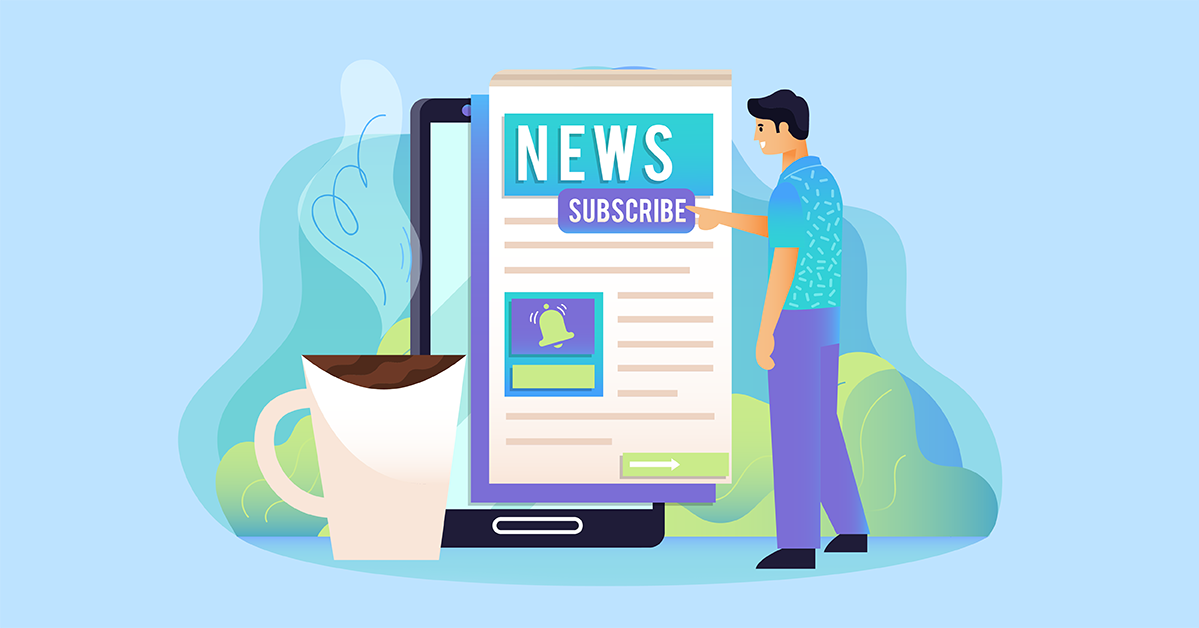Are Digital Subscriptions the Answer?
A growing number of publishers are finding that asking readers to pay for online news is a feasible route to sustainability for their operations.
Digital transformation has seen a rapid surge in the past two years. The pandemic pushed new audiences online, and forced others to expand their online activity — whether they were ready for it or not. But the transition has been in the works for two decades, and the news media industry has been at the forefront of this transition.
On the revenue front, this has generally been a painful process for news publishers - especially those whose business models relied on advertising rather than payments from readers. As "print dollars turned into digital cents" the advertising revenue from increasingly online publications dropped precipitously, making the financial models of many titles unsustainable and leading to widespread cost cutting and closure.
But, for those players still left in the game, new subscription options — or “reader revenues” as they have come to be known — are emerging as a promising new monetization source for the news media industry.
After the pandemic
Nearly three years into the COVID-19 pandemic, it’s clear that 2020 and 2021 saw big boosts in spending on media of all kinds. Housebound consumers turned to Netflix, Disney+, and other streaming media providers to stay occupied — but while news organizations reaped some benefits from this surge in consumption, results have been mixed.
In 2020, news media saw a decline in subscriptions as well as in ad revenue. Between tough economic times for subscribers and a decline in events — and therefore advertising for those events — news outlets saw a drop in revenue, and newsrooms bore the brunt of the impact.
INMA’s analysis of 125 international news brands found “that sessions dropped by 14% from the first quarter of 2021 to the second quarter of 2022. That’s a significant decrease. But when compared to the peak of the pandemic, there’s an even greater gap: Sessions are down 26.5% from the beginning of 2020, and the number of heavy users has dropped by one-third.”
These findings are not necessarily surprising as people return to normal, get back to work, and stop checking for pandemic news multiple times per day. Nevertheless, things are starting to look up for digital media.
Digital subscriptions to the rescue
Even as engagement declines and the numbers of overall subscriptions shrink, digital subscriptions continue to grow. Reuters found 59% of respondents say “their revenue has increased over the last year, despite the fact that more than half (54%) also reported static or falling page views. Publishers report that digital advertising has boomed with more people buying online, while subscription revenue has also increased.”
In 2022, publishers were feeling bullish about subscription revenue. Reuters reported that “More publishers plan to push ahead with subscription or membership strategies this year, with the majority of those surveyed (79%) saying this will be one of their most important revenue priorities, ahead of both display and native advertising.”
That gamble seems to have paid off. According to the FIPP report "From Print to Digital”, released in November of 2022, digital subscriptions continue to lag behind print but are gaining important ground; print accounts for 55.9% of total paid subscriptions, digital accounts for 44.1%. However, a closer look reveals “the current proportion of new starts for subscriptions to each medium, print accounts for just 33.2%, digital 66.8%.”
As Millennial and Gen Z consumers become a bigger part of the news audience, the trend toward digital will undoubtedly continue to grow. “Although Gen Z through Gen X report paying less attention to all forms of news compared with the national average, more Gen Z and Millennials say they are willing to pay for news in the future, compared to older generations (22% of Millennials versus 12% of Boomers),” reports Digital Content Next. Now is the time for publishers to improve their digital user experience and rethink how they will meet the needs of future users.
Optimizing revenues with digital transformation
There are other signs that the pendulum of prosperity may be swinging away from the digital duopoly of Facebook and Google, and back toward trusted media brands. The ability to track users across multiple sites and gather detailed browsing data by 'third parties' has been seriously undercut by Apple’s deprecation of IDFA, the opt-in approach to tracking and efforts by EU and national governments to exercise more control over big tech. That puts media brands with robust first-party data back at the center of digital advertising opportunities.
All of these developments open up opportunities for news publishers to optimize their earnings by leveraging their unique knowledge of their readers, their preferences and their habits.
In our next post we will be looking at how publishers can use dynamic analysis of reader data to set the right balance between free and subscriber content.

